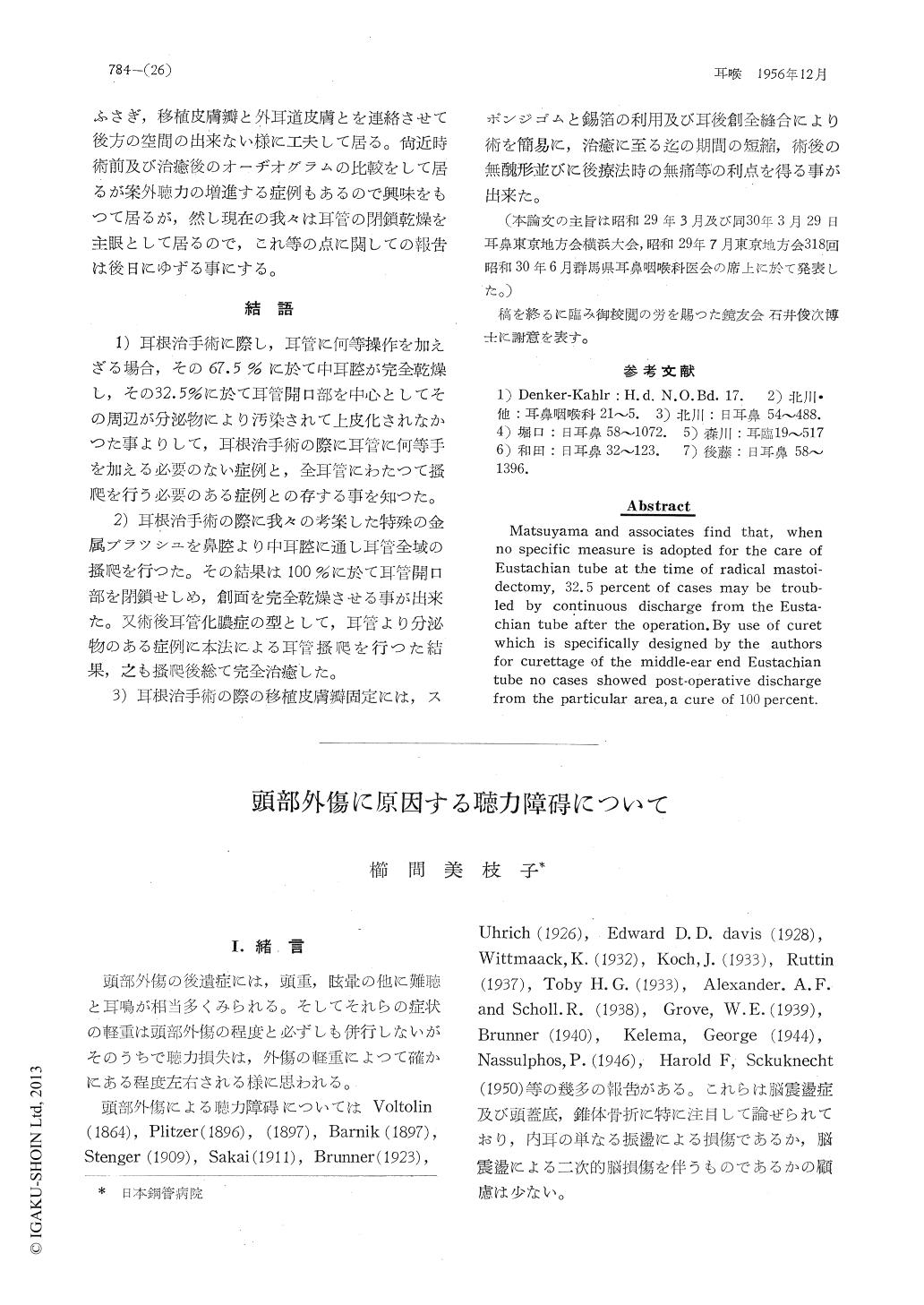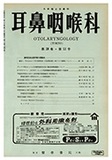- 有料閲覧
- 文献概要
- 1ページ目
Ⅰ.緒言
頭部外傷の後遺症には,頭重,眩暈の他に難聴と耳鳴が相当多くみられる。そしてそれらの症状の軽重は頭部外傷の程度と必ずしも併行しないがそのうちで聴力損失は,外傷の軽重によつて確かにある程度左右される様に思われる。
頭部外傷による聴力障碍についてはVoltolin(1864),Plitzer(1896),(1897),Barnik(1897),Stenger(1909),Sakai(1911),Brunner(1923),Uhrich(1926),Edward D. D. davis(1928),Wittmaack, K.(1932),Koch, J.(1933),Ruttin(1937),Toby H. G.(1933),Alexander. A. F. and Scholl. R.(1938),Grove, W. E.(1939),Brunner(1940),Kelema, George(1944),Nassulphos, P.(1946),Harold F, Sckuknecht(1950)等の幾多の報告がある。これらは脳震盪症及び頭蓋底,錐体骨折に特に注目して論ぜられており,内耳の単なる振盪による損傷であるか,脳震盪による二次的脳損傷を伴うものであるかの顧慮は少ない。
Hearing disturbances concurred as result of head-trauma are studied in 85 cases of head-injuries by means of audiometry: the results are as follows:
Of the 85 cases observed 33 are found to be affected with hearing loss. This loss is classified into 3 different groups according to the way in which pneumoencephalography may show changes in the intracranial conditions, With a well defined establishment of such a change the loss of hearing is found to be profound. However, betweween the factors as hearing loss present and the degree of sustained head-trauma such as the extent of skull fracture, the presence of aural bleeding, the length in duration of loss of consciousness or changes that may becognized in the character of spinal fluid, there anpeared to be no essential correlation.
In all cases of hearing losses mentioned above, it is found that the involved losses are concerned with tones, either, high or intermediate in quality only. Dipping at C4 and C5 is met with when cases show definite pneumoencephalographic changes: forming a pattern in this type of cases. On the other hand, when that change is rather obscure in character, no clear-cut dipping pattern would be found in spite of the fact that high-tone loss may be established. And C4 and C5 dip may be noted in some cases even when sustained hearing loss may be slight in amount. Establishment of thesefacts seem to point to a conclusion that dipping pattern may be found only when the inner ear is involved in the injury.
Since dipping pattern may be established quite early in the process that causes hearing loss due to noise stimulation and it may be found in head-trauma that involve only slight loss of hearing, it may be safely assumed that the point of vulnerability that nerve cells of Corti's organ to be injured might be in the area that responds to stimulation at 4,000 cycles.
In 5 cases hearing damages occurred in the opposite ear to which the traumatic blow had been dilivered. Further investigation is necessary in the study of force of contre coup with wider and deeper scope.

Copyright © 1956, Igaku-Shoin Ltd. All rights reserved.


